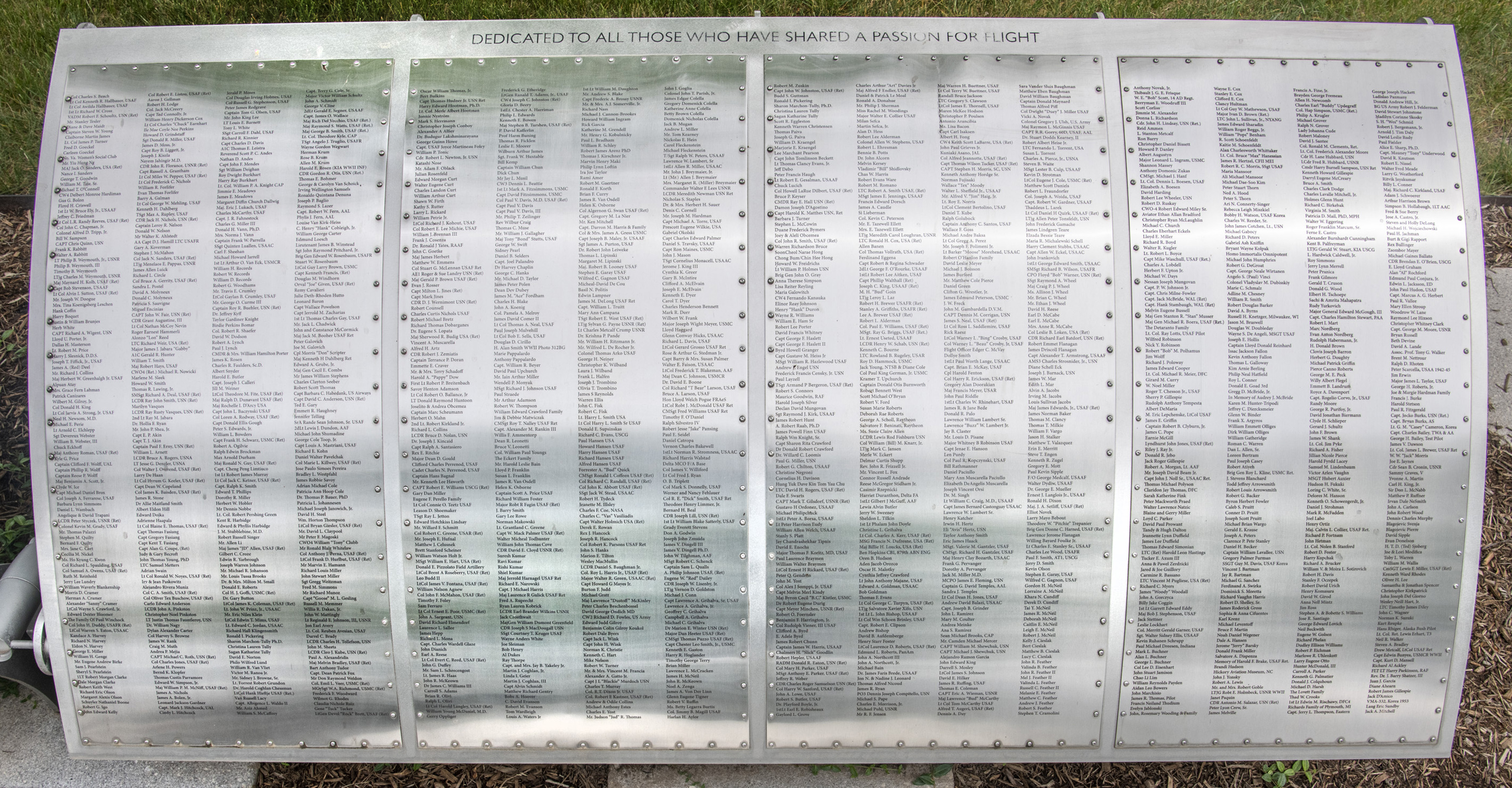Col Dwight 'Duey' J. Miller USAF
Foil: 17 Panel: 3 Column: 4 Line: 6
Wall of Honor Level: Air and Space Friend
Honored by:
Maj Timothy A. Sejba
Colonel Dwight “Duey” J. Miller retired from the United States Air Force on 1 September 2005 after 27 years of active duty service.
Colonel Miller entered active duty following his commission from the Air Force Reserve Officer Training Corps at Northern Arizona University in 1978 as a distinguished Graduate. Lt. Miller was first assigned as a Satellite Electronics Engineer with the Air Force Satellite Communications Program Office, the first of four positions he would hold while at Los Angeles AFS. Two years later, he became a Launch Operations Engineer for the Fleet Satellite Program Office where he was actively involved in the launch of FLTSATCOM IV and V. In 1981, Capt. Miller broadened his experience to become a System Development and Fabrication Engineer while remaining assigned to the Advanced Space Communication directorate within Space Division for the Secretary of the Air Force for Special Projects.
In 1987, Capt. Miller was transferred to HQ Air Force Space Command as the Chief, Military Satellite Communications Branch, Directorate of Space Operations at Peterson AFB, Colorado. His duties included organizing multi-command exercises, plus he authored many of the original Joint Command Operational Orders and Memorandums of Agreement for military and civil communication satellites. It was during this assignment that he was promoted to the rank of Major.
In 1989, Major Miller was selected to become Deputy, Technological Development, Office of Space Systems, at the Pentagon. He then became Chief, Advanced Programs Division working in Washington, D.C. He served three national program directors as their Program Element Monitor developing and defending their budgets and advocating new initiatives. He was selected to become the Deputy Director for Congressional Affairs in 1991, a highly visible position representing the military as a Congressional interface for space programs. He served as the key interface with an Allied country embassy staff on military space matters.
In the summer of 1993, Major Miller rejoined the Secretary of the Air Force Special Projects when he was assigned to Onizuka Air Station, CA in Operating Division Four, Mission Control Complex IX where he held the position of Direct, Mission Planning Operations Division and in 1994; he was chosen to become the Director of Operations. In 1995 he assumed his first command as Commander, OD-4/DC Satellite Operations Squadron. The Squadron planned and executed satellite operations vital to national security and forward theater combat commanders. It was a 6-flight squadron of 250 military and industry personnel.
In July 1996 he assumed his second command as Commander, Operations Support Squadron, 750th Space Group, 50th Space Wing, Onizuka Air Station, CA. His Squadron controlled non-flight activity at eight remote ground stations and one operating location of the Air Force Satellite Control Network. The Squadron developed 750th Space Group operational policies and plans, conducted operational readiness training, provided installation intelligence and special security. His squadron was also the first squadron to BRAC realign to Falcon AFB. It was a five-detachment, six-flight squadron of 350military and industry personnel.
In July 1997, he assumed command of the Operations Group, OD-7, Secretary of the Air Force, Office of Space and Technology, Fort Meade, Maryland. The Group was responsible for the Air Force component of a national-level, joint agency, and multi-service Space Operations Center where they control daily mission planning and operations for national space assets with a value in excess of $8 billion.
In June 1999, he graduated from Air War College, Maxwell AFB, Alabama with a Masters Degree in Strategic Studies.
In July 1999, he was assigned to USSPACECOM, Directorate of Plans as the Chief of the Reconnaissance and Surveillance Branch. During this assignment, he led the Joint Staff directed Senior Warfighter forum (SWarF) for Tasking, Processing, Exploitation and Disseminator (TPED). In August 2000, he was assigned to USSPACECOM, Directorate of Plans as the Chief of the Policy and International Affairs Division.
In July 2001, he was reassigned to the Under Secretary of the Air Force this time as the Operations Group Commander, Operating Division Four, Onizuka Air Force Station, California. He commanded an Operations Group consisting of three squadrons composed of over 600 military and industry personnel.
In June 2003, he was assigned to his final position as Vice Commander, Fourteenth Air Force, the historic Flying Tigers. In this pivotal leadership role, he was responsible for all United States Air Force space forces, including missile warning, space control, space-based surveillance, navigation and communications, satellite control, space launch and assigned and attached USSTRATCOM space forces. He continued in this leadership role until his retirement in the summer 2005. Col. Miller was a career space leader and operator in the United States Air Force.
Wall of Honor profiles are provided by the honoree or the donor who added their name to the Wall of Honor. The Museum cannot validate all facts contained in the profiles.
Foil: 17
All foil images coming soon.View other foils on our Wall of Honor Flickr Gallery
